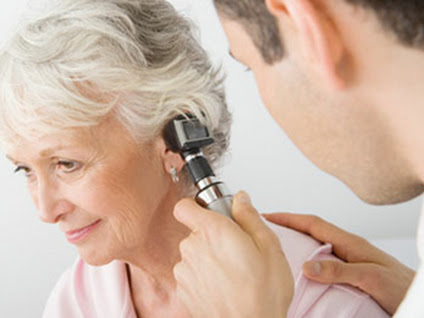
Finger friction test ,Watch test, Speech test; whisper and conversational speech
-
Tuning fork tests
-
Pure-tone audiometry
-
Speech Audiometry
-
Impedance audiometry / tympanometry
-
Brain-stem evoked response audiometry
Pure-tone Audiometry
Audiometer is an electronic device which produces pure-tones.
Person has to put on headphones and then listen for some different tones from low pitch to high pitch. Person has to push a button or raise hand when he hears each tone.
Hearing is measured at different frequencies from (250 Hz to 8,000 Hz). Results in decibels are charted in the form of graph called audiogram.
This procedure is called Pure-tone Audiometry.
It is a subjective test of hearing and cooperation and understanding of patient is of utmost importance.
Audiometry is required
To know degree and type of hearing loss.
Before prescribing a hearing-aid.
-
ormal hearing: less than 15-20 decibels
-
Minimal loss: 16 to 25 decibel loss
-
Mild loss: 26-40 decibel loss
-
Moderate loss: 41-55 decibel loss
-
Moderately severe Loss – 56 to 70 decibel loss
-
Severe loss: 71 to 90 decibel loss
-
Profound: 91 decibel loss and above
To know the type of hearing loss bone conduction is tested, If hearing is better by bone conduction a conductive loss is present.
Brain stem evoked response audiometry (BERA)
Auditory brain stem response (ABR) audiometry, Brainstem auditory evoked response audiometry (BAER).
It is a test of neurological activity of auditory brain stem in response to auditory stimuli (sound presented to the ear) It is an effective screening tool for evaluating cases of deafness due to retro cochlear pathology i.e. (Acoustic schwannoma) and is used to test hearing in newborn and children.
Otoacoustic emissions
It is used to determine cochlear function and assess hearing in newborns.
Our Specialist

Dr. Nitish Jhawar
M.S., FMAS, FIAGES, FALS, FACRSI
Fellow Advance Laparoscopic Surgery
Fellow Colorectal Surgery USA
Senior Laparoscopic & Colorectal Surgeon
Phone No: +91 9322 229 159
Email Id: info@neoalta.com


